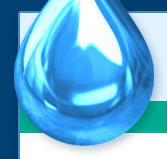What's the process like? The Schirmer test involves placing small strips of filter paper under the eyelid, closing the eyes and seeing how far down tears reach on the paper within five minutes. (See pictures below.) The greater the distance, the higher the natural tear production. The lower the score, the lower the tear production. There are several variations on the test. In order to determine basal tear production, the eye must be anaesthetized first, though some doctors will measure both with and without anaesthetic in order to determine both reflex tearing and basal tear production.
What does it feel like? Does it hurt? If it's done without anaesthetic, it can be pretty uncomfortable, especially if you're very dry, but it's over with pretty quickly.
What does my score mean? A score of 10 or more suggests normal aqueous tear production. The lower the score, the lower the tear production. Those with severe to moderate aqueous deficiency would typically score in the 0 to 5 range.
Is it reliable? There is much debate about the usefulness and accuracy of the Schirmer test, and there are many variations on the method for performing it. In general it can probably be assumed that while a Schirmer may produce a false "normal" result, a low score on a Schirmer test is a clear indication that there is in fact an aqueous deficiency.
Is it meaningful? What does it really tell me? The Schirmer should not be relied upon exclusively in attempting to measure dry eyes, both because of its limited reliability and because of the limited scope of what it is measuring (only aqueous tear production). It says nothing about tear quality, only quantity.
IMPORTANT: Many patients with symptoms of dry eye syndrome may have a normal aqueous tear production and normal Schirmer score. In such cases their symptoms may be caused by the common, but not always properly diagnosed, condition meibomian gland dysfunction. Another possibility is a poor mucin layer resulting in poor adherence of tears to the ocular surface. |



